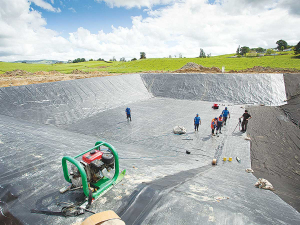Rewarding farmers who embrace sustainability
Winners of DairyNZ’s Sustainability and Stewardship awards in the Ballance Farm Environment Awards have their eyes firmly fixed on progressing a positive future for New Zealand dairy.
 The first thing to consider when planning effluent storage is to think about how you currently farm and whether anything will change in future.
The first thing to consider when planning effluent storage is to think about how you currently farm and whether anything will change in future.
Investing in effluent storage is a significant decision on-farm, so it’s worth taking the time to carefully plan what is needed to ensure the right design for your farm.
Current and future considerations
The first thing to consider when planning effluent storage is to think about how you currently farm and whether anything will change in future.
For example, if you’re currently an owner-operator but are planning to step back and get a manager, will that affect your plans? Or if you’re planning to expand your farm or herd, will the effluent storage pond be future proofed to cope with those changes?
An effluent system can be tailored to suit a farm’s requirements. Let your system designer and installer know your needs during the initial design discussion and keep your effluent system as simple as possible. This makes it easy for staff to understand and manage.
DairyNZ has a farm dairy effluent systems planning guide with a table of options to share with your designer (see dairynz.co.nz/effluent-system).
Choose an accredited designer
Designing and installing farm dairy effluent systems is a technical job requiring specialist knowledge.
As with a number of trades, an accreditation system is in place for effluent design.
Accredited providers are trained effluent system specialists who understand and follow the Farm Dairy Effluent (FDE) Code of Practice and design standards when designing and installing systems.
DairyNZ established the accreditation programme. Look for the green tick logo when selecting a dairy effluent system company. A full list of accredited FDE companies is available online at effluentaccreditation.co.nz
Gather your core information
When planning effluent storage, work with your designer to create one that’s suited to your needs and property. Some things to discuss and provide information on include:
consent requirements
soil type (soils can be either high or low risk for effluent application)
daily water use in the farm dairy
your budget
your farm management and how you want to apply effluent
the pond site – including distance from the cow shed and line of sight to houses
your preferences for the storage type
effluent solids management
safety management
siting the electricity connection.
To ensure that everyone is clear, check that the quote includes key requirements above such as the site, pond type, storage capacity and electricity.
Calculate how much storage is needed
Your designer can calculate how much effluent storage is needed, based on factors including location, soil type, effluent application, shed type and water use.
A report can show you how this figure was calculated. Regional councils usually prefer to see the calculation to ensure the storage meets regional rules or resource consent conditions. Some councils will only accept system design and storage calculations from an FDE accredited company.
It’s a good idea to have a little more storage than your calculations show. The Dairy Effluent Storage Calculator will give the best results on-farm by allowing for deferred irrigation and ensure you don’t run out of space.
If you want an independent storage calculation, an FDE accredited company that is not a product supplier or a Dairy Effluent Warrant of Fitness assessor can provide this service (see effluentaccreditation.co.nz and www.effluentwof.co.nz).
Training your team to use your new system
Ask your designer or installer for an operations and maintenance manual for your new system. They may also offer your team training on using the system.
Check the guide!
DairyNZ has summarised the key things to think about when planning or upgrading an effluent system, visit dairynz.co.nz/effluent
• Information supplied by DairyNZ.
Fonterra has cemented its position as the country’s number one cheesemaker by picking up nine NZ Champion of Cheese trophies this year.
New Zealand dairy processors are welcoming the Government’s commitment to continuing to push for Canada to honour its trade commitments.
An educational programme, set up by Beef + Land New Zealand, to connect farmers virtually with primary and intermediate school students has reported the successful completion of its second year.
The Food and Agriculture Organisation of the United Nations (FAO) has welcomed a resolution adopted by the United Nations (UN) General Assembly to declare 2026 International Year of the Woman Farmer.
Waikato herd health veterinarian Katrina Roberts is the 2024 Fonterra Dairy Woman of the Year.
Horticulture NZ chief executive Nadine Tunley will step down in August.
OPINION: Canterbury milk processor Synlait is showing no sign of bouncing back from its financial doldrums.
OPINION: It seems every bugger in this country can get an award these days.